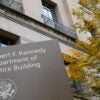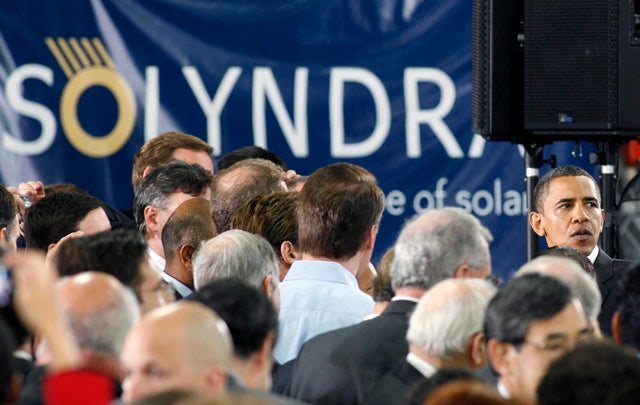Proponents of taxpayer support for green energy are touting a new study claiming that tax credits for solar companies will pay for themselves over the long run.
The problem: the study, conducted by the U.S. Partnership for Renewable Energy Finance, assumes that solar companies that enjoy the tax breaks in question will survive for the 30 year period the study measures. That’s no sure thing, as recent events and predictions among industry observers demonstrate.
The tax credit in question is generally equal to 30 percent of the cost of a renewable energy project. The credit was created under the Bush administration and later expanded by President Obama’s stimulus package.
Over a 30-year period, the study claims, the tax credit will “deliver a nominal 10% internal rate of return (IRR) to the federal government on the federal investment tax credit (ITC) for residential and commercial solar projects.” In other words, according to the study, the tax credit will pay for itself, and provide an additional 10% return for taxpayers, through the selling of Power Purchase Agreements and other means.
One need only look at a few recent solar energy bankruptcies to understand why the study falls short. Abound Solar, which filed for Chapter 7 last month, got an $12.6 million tax credit under the provision in question. Despite that support, the company will fire its 125 employees and suspend operations.
First Solar, which laid off 30% of its workforce earlier this year, also benefitted from the tax credit in question. Though it hasn’t fully ceased operations, whether the company can survive the 30 years necessary to produce the returns US PREF projects given recent turmoil is no sure thing.
Even Solyndra was backed by this tax credit, albeit indirectly. An IRS ruling shortly before the company declared bankruptcy allowed solar installations that used technology produced exclusively by Solyndra to double the benefit from the tax credit – from 30% of the cost of the project to 60%. Even that ruling failed to keep the company in afloat.
Solyndra, First Solar and Abound all produce (or produced) thin-film photovoltaic solar panels. According to the online trade publication Solarbuzz, that sector can expect the hard times to continue as it “filter[s] out uncompetitive technologies,” in the words of analyst Ray Lian. Lian expects the PV market to shrink from more than 400 manufacturers in 2011 to less than 100 by 2016.
That means that a number of the recipients of the solar tax credit may not be around to produce the returns projected in the US PREF study.
Troubled recipients of the tax credit in question have not been confined to thin-film producers, either. Concentrated photovoltaic producer Amonix announced last week that it had closed a North Las Vegas production facility. The company had received nearly $6 million in tax credits under the program in question to build that facility.
Much of the federal government’s “investment” in green energy has, by design, gone to highly risky companies or projects that would not be able to attract adequate private investment. Abound, for instance, had a junk bond rating from Fitch, which called it a “highly speculative” investment.
Given US PREF’s projected returns for green energy companies, it stands to reason that private investors would be lining up to finance these projects. But the same factors that dissuade private capital virtually guarantee that at least some of these federal “investments” will not pan out – and that taxpayers will not see the returns US PREF projects.
Note: this post has been updated to reflect the fact that Abound Solar received a tax credit worth $12.6 million, not $11.85 million as was initially reported.































10 Replies to “Study Shows ROI on Solar Energy Tax Credit, But Ignores Bankruptcies”